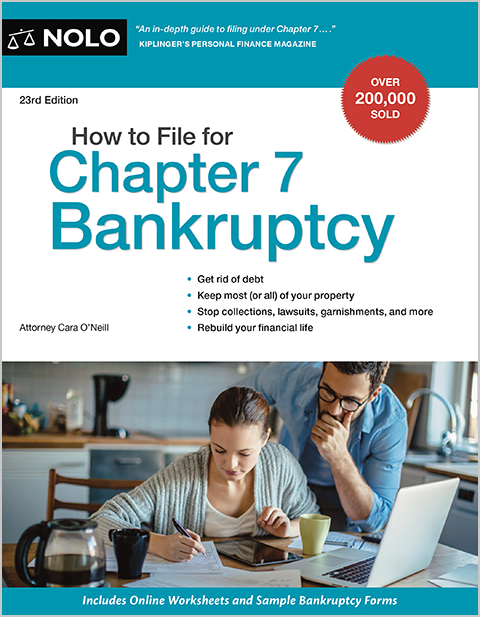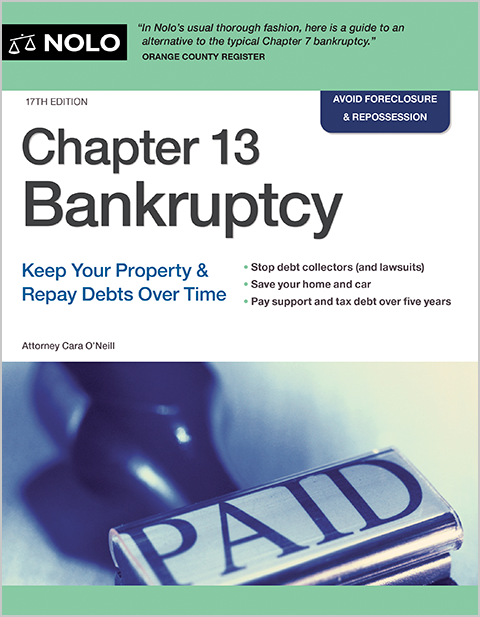In Chapter 13 bankruptcy, your repayment plan must represent your "best effort" at paying back your nonpriority unsecured creditors.
Before the court confirms (approves) your Chapter 13 repayment plan, you must show that it represents your "best efforts" to pay back creditors. It's also called the disposable income test because, in most Chapter 13 cases, you must pay all your disposable income (You'll find the exception to the Chapter 13 bankruptcy disposable income rule at the end of the article).
Read on to learn more about calculating your disposable income and the best effort requirement in Chapter 13 bankruptcy.
What's the Chapter 13 Best Effort Requirement?
After you file your repayment plan, the bankruptcy trustee is appointed to administer the case. The trustee and your creditors will review your proposed plan to ensure it complies with all bankruptcy requirements. Your repayment plan must also be approved (confirmed) by the court before being finalized. You'll show that you are using your best effort to repay creditors if you're paying your disposable income to nonpriority unsecured creditors (such as credit card companies) in your plan.
What Is Your Disposable Income?
Your disposable income is the amount that remains after deducting allowed living expenses and mandatory payments, such as secured and priority debt payments. (Secured debts are guaranteed by collateral, such as a mortgage or car payment. Priority debts are those that are sufficiently important to move to the front of the payment line. Examples include domestic support obligations and tax debt.)
You'll pay your disposable income toward your remaining debt (nonpriority unsecured debt, like credit card balances and medical bills).
Calculating Payments on Nonpriority Unsecured Debts
Using the Chapter 13 Calculation of Your Disposable Income form, you'll calculate your disposable income by deducting the following from your income:
- living expenses using national and local standards, as well as some actual amounts
- secured payments, such as mortgage or car payments (and any arrearages), and
- priority debts, such as past-due domestic support obligations and some tax debt.
The amount of disposable income you have each month is the minimum you'll have to pay your nonpriority unsecured creditors over five years.
Example. Amara and Theo are married and have a combined annual income of $90,000. Their state has a median income of $60,000 for a household of two. After completing the disposable income calculation, they learn their monthly disposable income is $500. Since they have to be in a 60-month bankruptcy plan, they'll have to pay nonpriority unsecured creditors at least $30,000 ($500 multiplied by 60) over the course of their Chapter 13 plan.
Will I Pay More in Chapter 13 Bankruptcy If I Own Significant Property?
You can't pay more than your disposable income in Chapter 13, because your disposable income represents all earnings that remain after paying required debts. However, there is another step in the Chapter 13 payment calculation, and if you don't meet the criteria, the judge won't approve your plan.
When deciding whether to confirm your repayment plan, the judge will look at another factor—whether your creditors are getting as much through your Chapter 13 plan as they would if you filed for Chapter 7 bankruptcy.
Here's why this matters.
In Chapter 7 bankruptcy, the trustee sells all nonexempt property (assets you can't protect with a bankruptcy exemption). The funds get used for priority creditors first, then, if anything remains, are divided among the nonpriority unsecured creditors.
By contrast, you'll get to keep nonexempt property in Chapter 13 bankruptcy. But, your creditors won't allow you to get a windfall. To ensure your creditors receive as much as they would in Chapter 7, you must pay the greater of the following:
- your total amount of priority debt plus your disposable income, or
- the value of your nonexempt property.
Example. Charlotte doesn't make much money, but she owns a significant amount of property. Her disposable income is $200 per month. The house she inherited from her grandmother has $150,000 of nonexempt equity (the amount she'd lose in a Chapter 7 case). She also owes $5,000 in tax debt. Charlotte must pay the greater of:
- $17,000 ($5,000 priority debt plus her monthly disposable income of $200 times 60), or
- $150,000 (the value of her nonexempt property ($2,500 per month for 60 months).
Because of her relatively low income, it's unlikely that she can support a confirmable Chapter 13 repayment plan. You'll find more information about this aspect of the repayment plan calculation, along with helpful examples, in Exemptions in Chapter 13 Bankruptcy.
Low-Income Chapter 13 Exception: If You're Qualified for Chapter 7
You won't be required to calculate a monthly disposable income figure if you qualified for Chapter 7 but decided to file for Chapter 13 for another reason, such as to save your home. Your plan payment will be based on your budget. The bankruptcy court will usually approve your Chapter 13 plan even if you're paying little or nothing to your nonpriority unsecured creditors, regardless of how much disposable income you have. Also, your plan can be only three years long instead of five.
Example. Cody is single and makes $35,000 a year. The median income for a single-person household is $45,000 in his state. Since Cody's income is below the median, he doesn't have to calculate his disposable income. He might end up paying nothing to nonpriority unsecured creditors (known as a "zero percent plan").
Need More Bankruptcy Help?
Did you know Nolo has made the law easy for over fifty years? It's true—and we want to ensure you find what you need. Below you'll find more articles explaining how bankruptcy works. And don't forget that our bankruptcy homepage is the best place to start if you have other questions!
|
Our Editor's Picks for You |
|
|
More Like This |
Are You Eligible for Chapter 13 Bankruptcy? |
|
Consider Before Filing Bankruptcy |
How to File for Chapter 13 Bankruptcy |
|
Helpful Bankruptcy Sites |
We wholeheartedly encourage research and learning, but online articles can't address all bankruptcy issues or the facts of your case. The best way to protect your assets in bankruptcy is by hiring a local bankruptcy lawyer.

